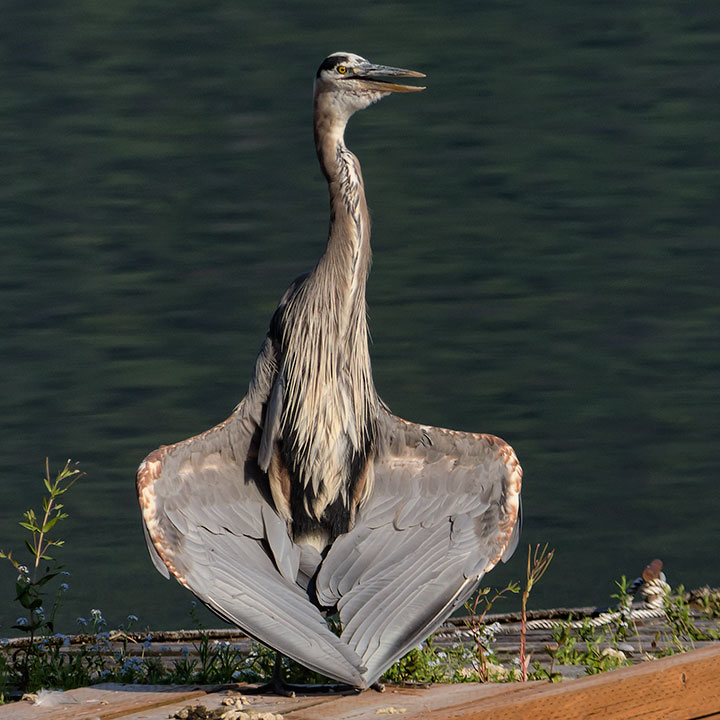Why is this heron pretending to be a balalaika?
I have watched herons stand in shallows, and perch on trees, pilings, docks or rocks. But, this is the first time I have seen one adopt this pose: up-stretched neck and the underside of its wings displayed to the sunlight. It stood in this way for perhaps a half hour. Odd, what was it doing?
A search of the internet revealed only a handful of pictures of this stance amid a barrage of normal poses. The stance is sufficiently uncommon that many experienced birders have never seen it.
First the picture; then a plausible explanation of this known, but uncommon stance.

It would be nice to be able to merely ask the heron what it was up to, but, in my experience, herons ignore even polite informational requests.
At first, I thought the bird was drying its wings in a manner similar to the way cormorants do. But, I didn’t see the heron dive, and the picture shows no evidence that the feathers are wet. Drying does not appear to be the motivation for the heron’s stance.
Maybe the heron has its wings spread so as to cool itself. There is evidence of cooling: the up-stretched neck, the open bill, the expanded throat (the gular pouch) all suggest the bird is trying to cool. (More about this, below). Yet, the heron has turned its wings to face the Sun as if to heat them. If it had wanted to cool off, its wings would be turned to offer as little exposure to the Sun as possible.
Robert Butler is someone who has written extensively about herons and has seen this stance a few times before. He suggested to me that the behaviour is probably therapeutic. Just as the human body fights infection by increasing the body’s temperature, some birds fight parasites by heating them. By facing its wings to the Sun, the heron is raising the temperature of its wings to drive out parasites. However, it is not desirable to have the heated blood from the wings circulate to the brain, so the neck and head of the heron are vigorously cooling any blood that is passed to the head. The heron appears to be heating its wings and compensating by cooling its head. Supporting this interpretation was the heron’s activities afterwards: it shook itself vigorously, likely to dislodge parasites, and then preened its feathers with both bill and claws.
While this interpretation is somewhat conjectural, the uncommon stance of the heron seems to be therapeutic. It would have been much easier had the heron been willing to just explain all of this to me.

looks like a Yoga/meditation pose….
Janna, which is an entirely fitting behaviour for a bird hanging out in the vicinity of Nelson.
Maybe it didn’t want its legs to get sunburnt.
Larry, chuckle…, in this stance, it sometimes was seen to stand on one leg, sometimes two.
Alistair, your characterisation of the heron’s pose as being balalaika-esque is spot-on! Fascinating.
Lynn, yes the position certainly reminded me of a balalaika. Mind you, those who would quibble might note that the delta on the balalaika points upwards, not downwards (as it does in the heron picture). But so what, the balalaika characterization works for me.
I found the same stance in a heron that sits above our back garden. Thanks for the explanation. If you’d like to see my photo of it please email.